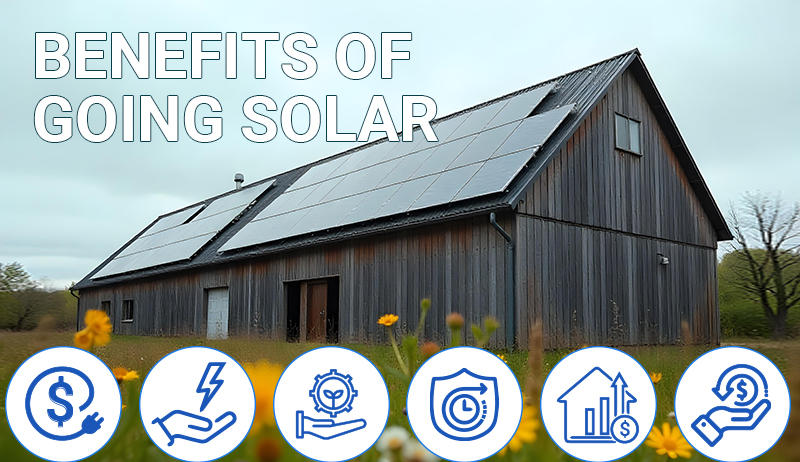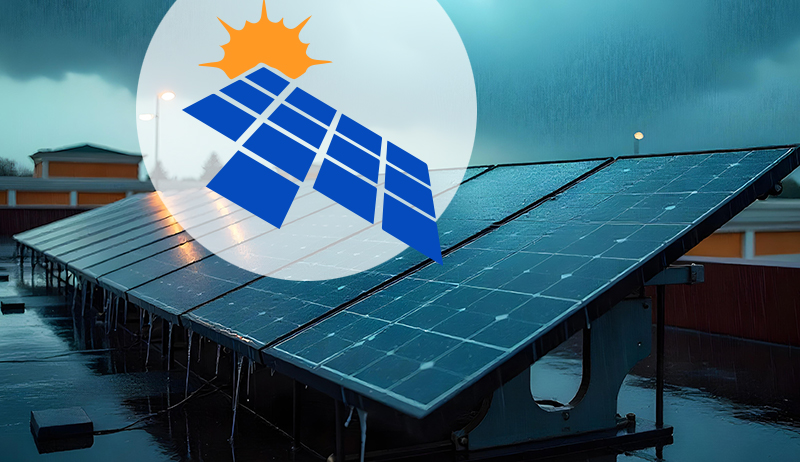Duke Energy Progress (DEP) is seeking approval from the North Carolina Utilities Commission (NCUC) to build, at least initially, a large (1,360 megawatt) fossil gas combined cycle plant near its existing coal-fired Roxboro Steam Electric Plant in Person County. This approval is called a Certificate of Public Convenience and Necessity, or CPCN. This proposed plant is part of Duke Energy’s Carbon Plan Integrated Resource Planning process, and you can read our blog series on the 2024 Duke CPIRP here.
In this blog, we will take a look at the existing coal plant, the proposed fossil gas plant, the gas supply pipeline options, and possible alternatives.
What power plants are at the Roxboro site now?
Currently, DEP owns and operates a four-unit, 2,462 megawatt (MW) coal-fired steam turbine electricity generating station in Person County. The plant was built in 1966 on the nearly 7,000 acres DEP owns on Hyco Lake, about 4.5 miles from the Virginia border. The lake was built to serve as a cooling reservoir for the coal plant. It is one of the largest power plants in the United States, but it does not operate at full capacity any longer. The graph below shows how the usage of each of the four units has declined since 2010. In addition, the plant has not been a reliable asset recently. During Winter Storm Elliott, the failure of a coal conveyor belt caused a loss of 685 MW from Units 1 and 2, and Units 3 and 4 also lost 300 MW. Many fossil coal and gas units failed during Winter Storm Elliott, but the Roxboro plant was the largest plant failure in the Duke system.

Also on the DEP property is a large substation with 230 kV transmission lines that carry electricity south further into North Carolina and north into Virginia and into the organized wholesale electricity market called PJM. Of Duke Energy’s transmission assets, 230 kV lines are the second largest in size and capacity (after 500 kV lines).
Woodland Elementary School, discussed more below, is less than 1.5 miles from the emissions stacks of the coal plant. The stacks are visible from the school (see image below).

Source: Googlemaps Streetview (accessed July 15, 2024)
What is Duke proposing?
In the current proceeding, DEP is proposing to retire Units 1 and 4 (the oldest unit and the youngest unit, totaling 1,091 MW and shown as the yellow and red lines in the graph above) and replace them with a 1,360 MW combined cycle gas plant to be built on an adjacent part of DEP’s Hyco Lake property. Duke plans for the gas plant to be completed in late 2028, before the coal units would be retired and dismantled in early 2029. Duke also plans for a second 1,360 combined cycle gas plant to be built to replace Units 2 and 3, with this second plant becoming operational in 2030. However, the second plant is not part of this CPCN application. In addition to gas, the plant could be run on fuel oil. The plant lifetime is estimated to be 35 years (so until 2063).
The estimated cost is confidential right now, but we estimate it would cost around $1.96 billion (source: SACE calculations using the National Renewable Energy Lab’s Annual Technology Baseline).
Will a pipeline be needed?
The fossil gas fuel supply will come from a planned new Dominion/PSNC pipeline called the T15 that will originate from the Williams Transco Interstate Pipeline near the Dan River in Rockingham County. This T15 pipeline is subject to NCUC approval as well, and if approved, the costs of this pipeline will be “assigned” to DEP ratepayers as well, because this pipeline serves only one plant. Cost estimates have not been shared publicly. Currently, Duke does not have an adequate guaranteed supply of gas (called firm transportation, or FT) to meet the needs of its existing resources. In Appendix K of Duke’s CPIRP, the Company notes that it has firm gas supply agreements for less than half of the peak demand (or peak burn) of its existing fleet. The Company states “(A)ny new CC generation will necessitate the need for additional interstate FT to support those units’ burn requirements.” So in addition to the T15, Duke has contracted for additional firm gas supply from both the proposed Mountain Valley Pipeline Southgate project and from a proposed Williams Transco expansion project called the Transco Southeast Supply Enhancement. Both of these proposed pipeline projects fall under the jurisdiction of the Federal Energy Regulatory Commission (FERC), and neither of these projects have completed the approval process or started construction.

Source: Joint Testimony of Evan D. Lawrence and Dustin R. Metz, Public Staff of the North Carolina Utilities Commission Docket Nos. E-2, Sub 1318, and EC- 67, Sub 55 (p. 7)
Are gas plants cleaner than coal plants?
Burning fossil gas (also known as methane) to produce electricity emits less carbon dioxide and other air pollutants like mercury than coal, but there are still emissions. Even the most efficient combined cycle plants still emit NOx, SOx, and many other localized pollutants into the air. They emit the most when they are ramping (turning the burning of gas up and down) and when they are running on fuel oil instead of gas.
The estimated emissions from the gas plant are summarized in this table from DEP’s air permit application to the NC Department of Environmental Quality.

Source: https://edocs.deq.nc.gov/AirQuality/DocView.aspx?id=480474&dbid=0&repo=AirQuality
The proposed gas plant site is even closer (approximately 3,776 feet) to Woodland Elementary School, referenced above in the first section. This school serves more than 200 children in kindergarten through 5th grade. Approximately 97% of students at Woodland Elementary qualify for free or reduced lunch, according to the school profile on GreatSchools.org.

Proximity of proposed methane gas plant site and Woodland Elementary School. Source: Google Earth (accessed July 15, 2024). Distance from the proposed combined cycle plant and emissions stacks site to Woodland Elementary School is 3,776 feet.
Did Duke evaluate any clean repowering alternatives, such as solar plus storage and transmission options?
No. According to testimony filed by the Office of Public Staff, “Our investigation did not reveal that the Companies took any other actions to evaluate alternate options other than building Roxboro CC1, and ultimately CC2.” (Testimony of Evan D. Lawrence and Dustin R. Metz filed in Docket No. E-2 Sub 1318 filed on June 24, 2024, p. 28)
Will the Roxboro gas plant meet EPA’s greenhouse gas standard?
Unclear. In April, the EPA finalized rules that limit greenhouse gas emissions from existing coal plants and new gas plants, including the one DEP has proposed at Roxboro. The EPA regulations would require DEP’s new gas plant at Roxboro to reduce emissions drastically in 2032, just four years after it started operating, or run less than 40% of the time. Duke has indicated that it is currently assuming the plant will be converted to run on 100% hydrogen at that point, which would require retrofits and a source of hydrogen.
SACE will dive a little deeper into the Roxboro gas plant proposal in future posts.
The post Duke Energy’s Proposed Roxboro Gas Plant: A Primer appeared first on SACE | Southern Alliance for Clean Energy.
Renewable Energy
Trump’s Agenda Is Even Far-Reaching Than People May Think
 As Trump’s former lawyer Ty Cobb says at left, in addition to turning the United Stated into an autocratic regime, at the same time, Trump needs to alter history such that future generations don’t think he did anything wrong.
As Trump’s former lawyer Ty Cobb says at left, in addition to turning the United Stated into an autocratic regime, at the same time, Trump needs to alter history such that future generations don’t think he did anything wrong.
Yes, he has his hands full, but he’s assisted by hundreds of traitors in congress, and hundreds of millions of hateful morons in the U.S. electorate.
Renewable Energy
Victoria’s VEU Scheme Introduces New Solar Incentives for C&I Properties
Renewable Energy
Does Evil “Destroy Itself?”
What Aristotle said here is interesting, especially since there has been so must of both evil and good through the millennia. The days since Aristotle have been marked by the Golden Age of Rome (Pax Romana), the Dark Ages, the Spanish Inquisition, the Rennaissance, the Enlightenment, the end of slavery, the slaughter of the Native Americans, the post-Emancipation oppression of Black Americans, the Holocaust, and so many more major historical events.
It seems we’re just about to see what happens to the evil represented by Trump’s second term in office. It seems that the United States has re-elected a man to the highest position on Earth whose only interests are punishing his enemies, enriching himself from public office, further consolidating his power, and keeping himself out of prison.
Will this evil destroy itself?
Again, we’ll have to wait and see.
-
Climate Change2 years ago
Spanish-language misinformation on renewable energy spreads online, report shows
-
Climate Change Videos2 years ago
The toxic gas flares fuelling Nigeria’s climate change – BBC News
-
Climate Change2 months ago
Guest post: Why China is still building new coal – and when it might stop
-

 Greenhouse Gases1 year ago
Greenhouse Gases1 year ago嘉宾来稿:满足中国增长的用电需求 光伏加储能“比新建煤电更实惠”
-

 Climate Change1 year ago
Climate Change1 year ago嘉宾来稿:满足中国增长的用电需求 光伏加储能“比新建煤电更实惠”
-
Greenhouse Gases2 months ago
Guest post: Why China is still building new coal – and when it might stop
-

 Carbon Footprint1 year ago
Carbon Footprint1 year agoUS SEC’s Climate Disclosure Rules Spur Renewed Interest in Carbon Credits
-
Renewable Energy3 months ago
US Grid Strain, Possible Allete Sale







